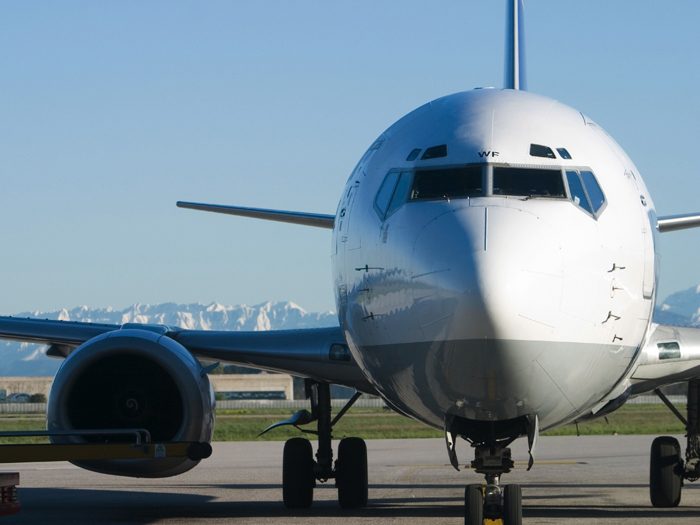4 Risk Management Tips for Aviation Businesses Facing a Changing Market

Despite the fact that nearly one in three Americans is afraid of flying, aviation is astonishingly safe. Pilot training standards remain stringent, as they do for aircraft and equipment maintenance. The frequency of accidents has held steady, if not decreased.
“The aviation industry as a whole remains incredibly safe,” said Paul O’Ryan, Head Aviation North America, Swiss Re Corporate Solutions. “Safety is always a concern from a risk management perspective, but it is not the only factor influencing underwriting decisions because the industry has proven itself to be adept at mitigating those risks.”
Although the aerospace industry seems to be doing everything right from a safety perspective, insured losses keep trending up.
O’Ryan explained what’s driving this trend, and what aviation companies can do to insulate themselves from fluctuations in insurance pricing.
Costly Liability Settlements Inflate Losses
Claim frequency has held steady, but upticks in loss severity have increased the average cost per claim. In other words, though crashes and accidents aren’t becoming more common, they are becoming more expensive. Rising liability settlements and higher-value parts and materials are both contributing to this trend.
Losses based on the physical damage to aircraft hulls were historically very predictable, but the rising costs of a claim’s liability component has forced a shift in the way insurers price this class of business from frequency-based to severity-based underwriting.
In a severity-based scenario, losses are estimated with more emphasis on the liability component rather than physical damage.
“In the past, liability awards had been pretty tame and fair,” O’Ryan said, “but the amounts have grown astronomically in the past few years, thanks to increasingly generous juries. In a claim where damage to the hull is worth $1 million, the liability settlement could drive the value of that loss up to $3 million to $5 million.”
To make matters worse, the value of the hulls themselves is also rising thanks to newer, more expensive materials.
“Newer equipment is crashing at the same rate as older equipment. And that newer equipment costs much more to repair or replace,” O’Ryan said.
Big Losses Force Insurer Exits
Burgeoning losses are not sustainable for all underwriters in a sector requiring niche expertise. While excess capacity challenges carriers’ ability to raise rates in other property/casualty lines, aviation is experiencing capacity reductions due to players exiting the already-small market.
“The aviation market is not like property or casualty. It’s highly specialized, so we’re not talking about hundreds of carriers, we’re talking about dozens of carriers to begin with.” – Paul O’Ryan, Head Aviation North America, Swiss Re Corporate Solutions
“Brokers have fewer and fewer markets to approach,” O’Ryan said. “The aviation market is not like property or casualty. It’s highly specialized, so we’re not talking about hundreds of carriers, we’re talking about dozens of carriers to begin with.”
“When you have reductions in capacity throughout the market, it’s time to pay more attention to your company’s risks and have open conversations with your underwriters, O’Ryan said. While the aviation market does not yet exhibit signs of hardening, “it is certainly in s a state of transition that we haven’t seen for a number of years.”
Risks and Recommendations for Aviation Companies
What does this mean for aviation companies and the corporate entities who contract with them?
O’Ryan says it will be more important than ever for operators to review their polices for potential gaps and ensure they are carrying appropriate limits to match up with growing loss potential.
“I always recommend to my corporate clients that they should not assume they know what limits any entities they contract with are carrying. The aircraft they’ve chartered for their CEO to fly in must align with casualty umbrella policy limits to close any coverage gaps,” O’Ryan said.
The size of their operational footprint matters as well.
“Where are they going from a revenue standpoint? Are they looking to purchase new aircraft or revitalize the existing fleet? What are they doing to ensure their pilots have the most up-to-date training available to them?” O’Ryan said. Any operational growth demands a hard look at the impact to a company’s overall risk portfolio and insurance program.
Here are some specific steps aviation entities can take to minimize their exposure and maximize the value of their insurance spend:
1. Keep up with safety and training standards.
As always, solid risk management should ensure pilot training and equipment maintenance adhere to high standards. Despite a looming pilot shortage, operators cannot afford to take shortcuts for the sake of getting more fliers into cockpits. And so far, according to O’Ryan, this has not happened.
“We are still seeing the same pilot standards, which is a very good thing,” he said. “It will be critical to maintain that going forward.”
It’s worth implementing advanced recurrent training for pilots in addition to standard annual training. In addition to further reducing the likelihood of pilot error, advanced training creates a safer risk in the eyes of underwriters.
2. Start your renewal process earlier.
Because the market is in transition, brokers need to get to the markets earlier to find a competitive quote. Companies can no longer expect to work with the same carriers at the same price year after year.
“Have very clear, very transparent conversations with your broker early in the process,” O’Ryan said. “Waiting too long or not being prepared at the start can have a negative impact on your renewal.”
3. Collect more data.
The more information you can provide to your underwriter the better, including a full and detailed picture of your operations as well as any training and maintenance programs.
“For risk managers, providing a preponderance of data ensures they’ll not only secure the appropriate limits, but will also get the most competitive terms available,” O’Ryan said.
4. Pick a reliable insurance partner.
Given the exit of several insures and the ongoing transition from frequency-based to severity-based pricing, companies would do well to choose a carrier who has demonstrated commitment to the space and disciplined underwriting.
“You want an underwriter that’s got the wherewithal to look at risk with a wider lens and that can dovetail coverage for aviation risk with other lines of business in order to smooth out all of their exposures,” O’Ryan said. &











